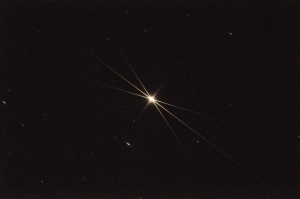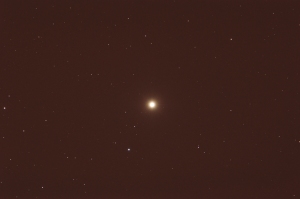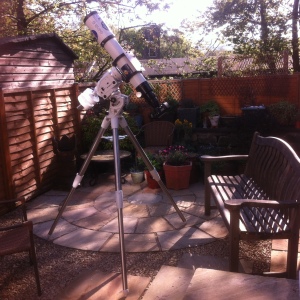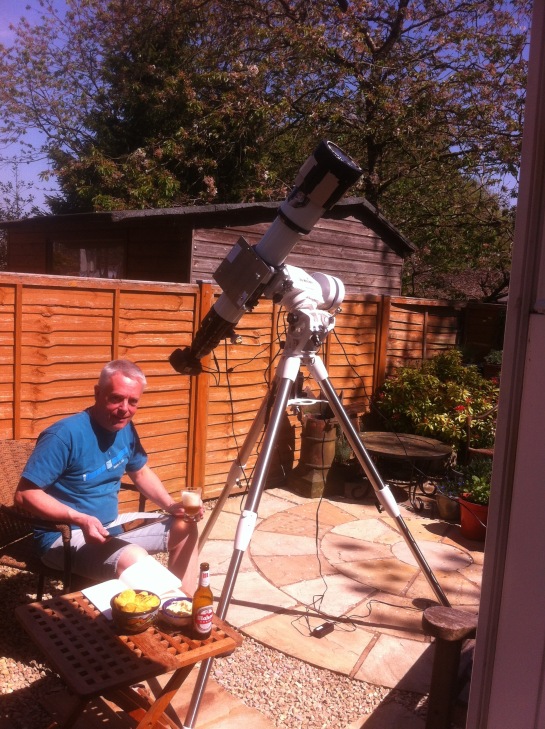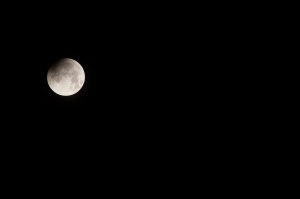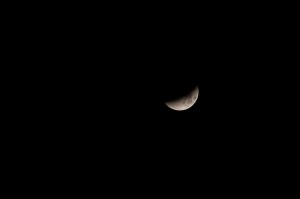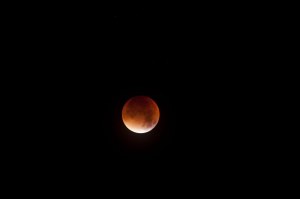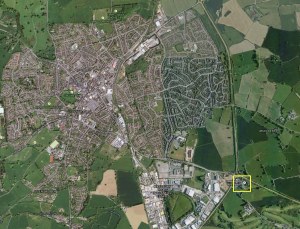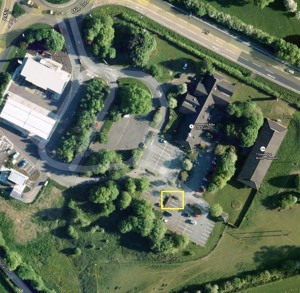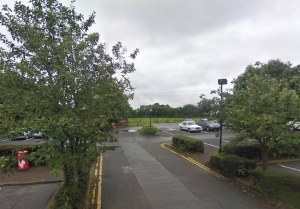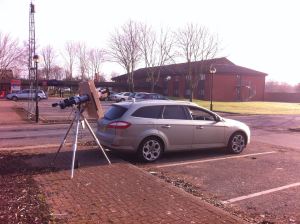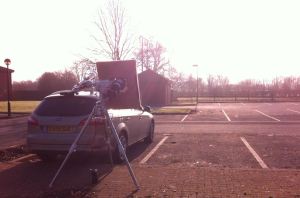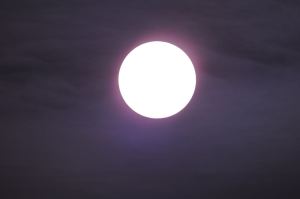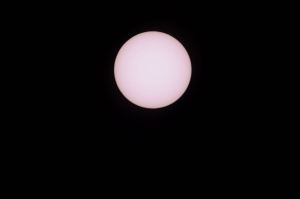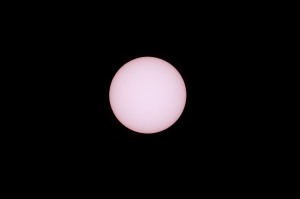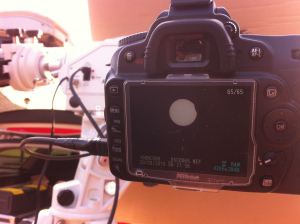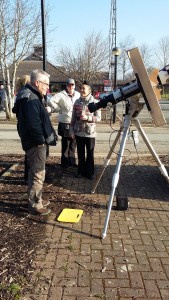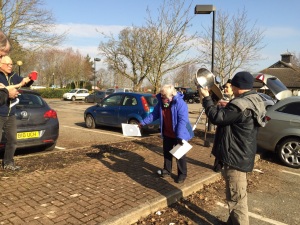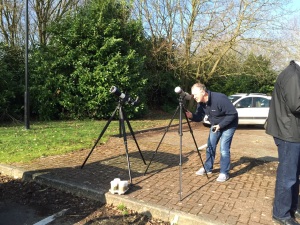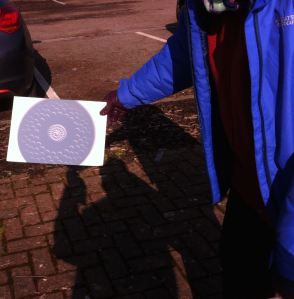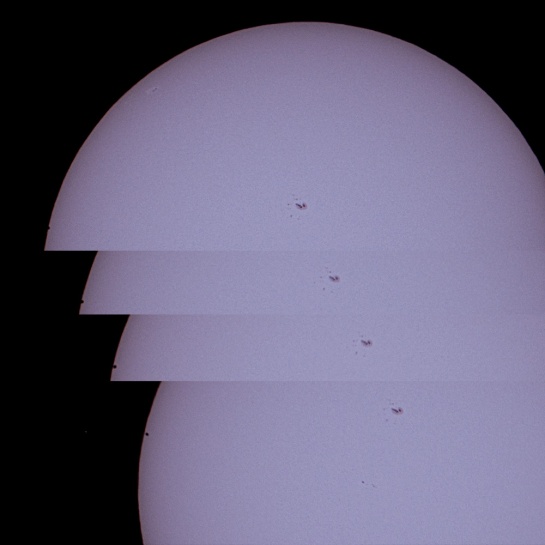 On 9 May 2016, shortly after 12 noon, the planet Mercury passed across the face of the Sun and the whole transit, lasting over seven hours, was visible from the UK. Resistance is futile, and the prospect of the transit screamed “TIME LAPSE VIDEO!” even though Mercury would be only 9 pixels in diameter on the 12MP sensor of my Nikon D90.
On 9 May 2016, shortly after 12 noon, the planet Mercury passed across the face of the Sun and the whole transit, lasting over seven hours, was visible from the UK. Resistance is futile, and the prospect of the transit screamed “TIME LAPSE VIDEO!” even though Mercury would be only 9 pixels in diameter on the 12MP sensor of my Nikon D90.
I reckoned that about 15 seconds of video would balance the attraction of seeing Mercury crossing the edge of the Sun against the potential tedium of watching a black dot crawl across a white disc, so I settled on 400 frames at 10 per minute – 40 minutes of transit – rendered at 30 frames per second for a smooth video of a tolerable 13 seconds.
Mindful of the seasickness-inducing bounces of the Sun in the viewfinder during my solar eclipse time lapse, and the hours I spent realigning some 800 frames by hand, I set up the mount the previous night and aligned it as well as possible using the limited view of the stars from my back yard. After the third iteration, the handset reported polar alignment to below one arcminute of error.
Focusing on the Sun would be the next challenge, so I decided to pre-focus and leave the camera in place overnight.
This is the focusing frame through the Bahtinov mask and…
…a quick five-minute unguided frame of Arcturus. I went to bed happy.
Next morning, the sun rose in a cloudless sky and the kit was waiting exactly as I left it. Restarting the mount from the “Park” setting was faultless, and the GOTO put Mercury (and therefore the Sun) right in the frame first time. The temperature change from night to day meant that the focus was awry, so I spent time refocusing using a sequence of trial-and-error photos and a felt tip pen on the focusing knob.
The reminder alarm went off at 12:10 and I started the sequence on the timer. This device will take up to 399 frames, which suited me perfectly. With the mount and the camera running on mains adapters rather than batteries, there was little to do but relax and enjoy the sunshine. I watched the black dot creep onto the white disc through the viewfinder, so I can say absolutely that I observed the Mercury transit as it happened.
After 400 frames, conditions were so good and the quality of the images was so strong that I swapped the memory card in the camera and reset the timer for a second batch. 40 minutes later, same again. And again. And again. By the time the Sun moved behind the house, I had accumulated 1,887 frames, so the resulting video covers over three hours of the transit and lasts 63 seconds.
There are two versions of the video – the first is sharpened using Adobe Camera RAW then the frames are cropped and the Sun is centered in each frame using an excellent piece of software called PIPP. The second version includes a digital zoom created with further cropping. There’s still quite a shimmy on the Sun, but I can’t process that out – much of it is down to atmospheric conditions. It is tempting to try and align all the subframes by reference to the sunspots, but the Sun can be seen to be rotating over the course of the video so that wouldn’t work.
What can be achieved with relatively modest off-the-shelf kit and a little planning never ceases to amaze and delight me.
